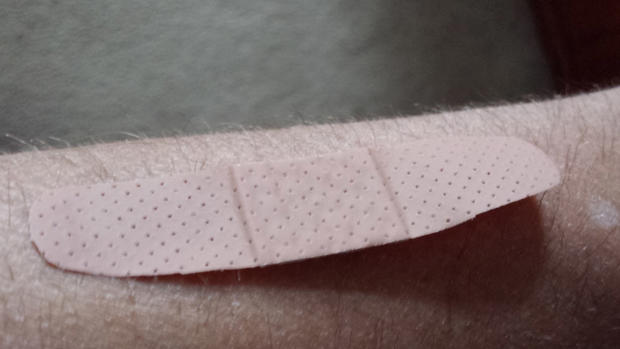Cover That Cut, Or Let It Air Out? The Latest Advice
DENVER (CBS4) -Lots of us are having to deal with cuts, scratches, and scrapes as we work on our warm weather projects or just enjoy our summertime fun time. So when I see patients who have suffered a divot to the skin and we talk about the best way for a wound, the question that almost always seems to pop up is "should I cover this up or let it air out?"
The answer to that one has changed a number of times over the years, so here's the latest thinking from wound care experts about caring for simple dents and dings.
Let's start with a basic step by step guide from the American Academy of Dermatology about taking care of a cut or scrape from start to finish—- keeping in mind these are tips for injuries that don't require stitches or a doctor's care:
- Wash your hands with soap and water. You don't want to clean a cut with contaminated hands
- Wash the cut to lessen the risk of infection. Really, all you need is water to take care of business, and the faucet or a basin to soak in works fine in most cases.
- To really cleanse it well, especially if the wound is a touch on the dirty side, you can use a gentle soap to slide germs and debris out. What to use? I use baby shampoo or a mild dishwashing liquid--- both are easy on the wound and don't sting. I never use peroxide, alcohol, or iodine, etc. --- they sting and damage normal tissue. Frankly, the best antibacterial action comes from water by washing the wound out… nothing extra special needed.
- Stop the bleeding. Apply pressure to the cut using a clean washcloth or gauze. Maintain pressure for one to two minutes or until the bleeding stops. Don't dab—just press and hold. You can elevate as well.
- Apply petroleum jelly. That's right: A Vaseline-type product. This will help keep the wound moist, and moisture has been shown to speed up the healing process.
- Do not apply topical antibiotics. Once again, that's right. You don't need "Neosporin" or similar on a simple wound.
- Cover the cut with a sterile bandage, and then change the bandage every day. And if you notice increasing pain, redness, or discharge from the wound---go see your doctor since infection could be developing.
The wounds that require a doctor's look-see are those that won't stop bleeding, gape or seem wide open, are deep, are in an important cosmetic place such as your face, are more painful than a simple wound should be, or if there is any numbness or tingling or problems with movement.
Any concerns—check things out, and please don't wait until the next day. Some cuts are risky to stitch if they are more than several hours old.
Dr. Dave Hnida is CBS4's Medical Editor. He blogs about the latest studies and trends in the health world. Read his latest blog entries, check out his bio or follow him on Twitter @drdavehnida




